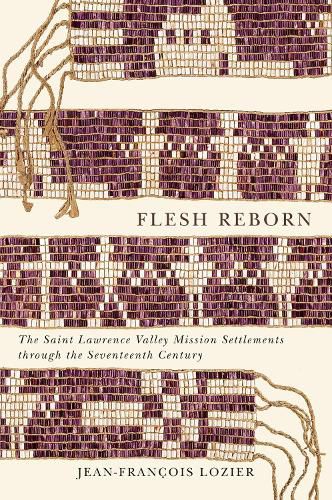Readings Newsletter
Become a Readings Member to make your shopping experience even easier.
Sign in or sign up for free!
You’re not far away from qualifying for FREE standard shipping within Australia
You’ve qualified for FREE standard shipping within Australia
The cart is loading…






This title is printed to order. This book may have been self-published. If so, we cannot guarantee the quality of the content. In the main most books will have gone through the editing process however some may not. We therefore suggest that you be aware of this before ordering this book. If in doubt check either the author or publisher’s details as we are unable to accept any returns unless they are faulty. Please contact us if you have any questions.
The Saint Lawrence valley, connecting the Great Lakes to the Atlantic, was a crucible of community in the seventeenth century. While the details of how this region emerged as the heartland of French colonial society have been thoroughly outlined by historians, much remains unknown or misunderstood about how it also witnessed the formation of a string of distinct Indigenous communities, several of which persist to this day. Drawing on a range of ethnohistorical sources, Flesh Reborn reconstructs the early history of seventeenth-century mission settlements and of their Algonquin, Innu, Wendat, Iroquois, and Wabanaki founders. Far from straightforward byproducts of colonialist ambitions, these communities arose out of an entanglement of armed conflict, diplomacy, migration, subsistence patterns, religion, kinship, leadership, community-building, and identity formation. The violence and trauma of war, even as it tore populations apart and from their ancestral lands, brought together a great human diversity.
By foregrounding Indigenous mission settlements of the Saint Lawrence valley, Flesh Reborn challenges conventional histories of New France and early Canada. It is a comprehensive examination of the foundation of these communities and reveals the fundamental ways they, in turn, shaped the course of war and peace in the region.
$9.00 standard shipping within Australia
FREE standard shipping within Australia for orders over $100.00
Express & International shipping calculated at checkout
This title is printed to order. This book may have been self-published. If so, we cannot guarantee the quality of the content. In the main most books will have gone through the editing process however some may not. We therefore suggest that you be aware of this before ordering this book. If in doubt check either the author or publisher’s details as we are unable to accept any returns unless they are faulty. Please contact us if you have any questions.
The Saint Lawrence valley, connecting the Great Lakes to the Atlantic, was a crucible of community in the seventeenth century. While the details of how this region emerged as the heartland of French colonial society have been thoroughly outlined by historians, much remains unknown or misunderstood about how it also witnessed the formation of a string of distinct Indigenous communities, several of which persist to this day. Drawing on a range of ethnohistorical sources, Flesh Reborn reconstructs the early history of seventeenth-century mission settlements and of their Algonquin, Innu, Wendat, Iroquois, and Wabanaki founders. Far from straightforward byproducts of colonialist ambitions, these communities arose out of an entanglement of armed conflict, diplomacy, migration, subsistence patterns, religion, kinship, leadership, community-building, and identity formation. The violence and trauma of war, even as it tore populations apart and from their ancestral lands, brought together a great human diversity.
By foregrounding Indigenous mission settlements of the Saint Lawrence valley, Flesh Reborn challenges conventional histories of New France and early Canada. It is a comprehensive examination of the foundation of these communities and reveals the fundamental ways they, in turn, shaped the course of war and peace in the region.